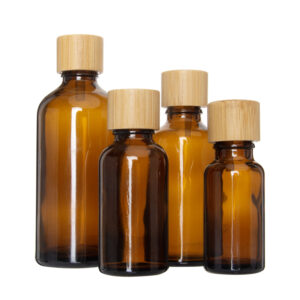
Nachrichten & Blog
Großartige Leistungen in der Wirtschaft werden nie von einer einzelnen Person erbracht. Sie werden von einem Team von Menschen vollbracht. Wir haben diese dynamische Gruppe von Menschen
Dieser Artikel befasst sich eingehend mit kosmetischen Glasflaschen, ihrer Definition, ihren Vorteilen, ihrer Klassifizierung und Zuordnung, ihrem Färbeprozess, den Kosten für die Formöffnung, dem Produktionszyklus und der Mindestbestellmenge sowie den Vorsichtsmaßnahmen für die Verwendung. Anhand spezifischer Daten, Tabellenvergleiche und konkreter Fälle werden die Eigenschaften von Kosmetikglasflaschen in Bezug auf Materialsicherheit, überlegene Leistung und exquisite Handwerkskunst umfassend dargestellt und bieten eine professionelle Referenz für Praktiker der Kosmetikindustrie und Leser, die sich mit dem Verpackungsbereich beschäftigen.
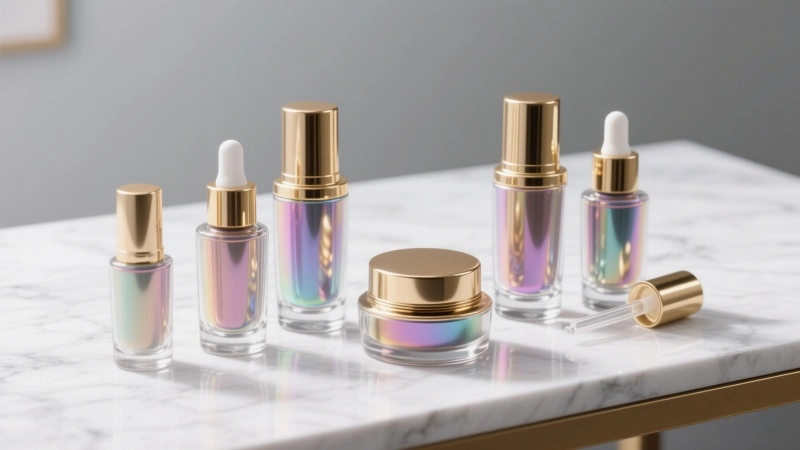
Glas, ein Werkstoff mit einer langen Geschichte und einer breiten Anwendung, wird hauptsächlich aus Soda, Kalkstein und Quarz hergestellt. Diese Rohstoffe bilden im geschmolzenen Zustand bei hohen Temperaturen eine kontinuierliche Netzwerkstruktur. Mit fortschreitender Abkühlung nimmt die Viskosität des Glases allmählich zu und es härtet schließlich zu einem amorphen Feststoff aus. Die chemische Zusammensetzung ist in der Regel $Na_2SiO_3$, $CaSiO_3$, $SiO_2$ oder $Na_2O-CaO-6SiO_2$ usw., und der Hauptbestandteil ist ein Silikatkomplexsalz.
Diese einzigartige Struktur verleiht dem Glas viele Eigenschaften. Aus mikroskopischer Sicht ist die atomare Anordnung im Inneren des Glases unregelmäßig, was in scharfem Kontrast zur geordneten atomaren Anordnung kristalliner Materialien steht. Es ist diese amorphe Struktur, die dem Glas eine gute Transparenz und chemische Stabilität verleiht. Im Bereich der kosmetischen Verpackungen gibt es zwar keine spezielle Materialklassifizierung für Glasflaschen, aber sie können je nach Verwendungszweck detailliert unterteilt werden, was auch die Vielseitigkeit und Anpassungsfähigkeit von Glasmaterialien widerspiegelt.
Der größte Vorteil von Glas ist seine Bleifreiheit und Unbedenklichkeit, was eine solide Garantie für die sichere Aufbewahrung von Kosmetika darstellt. Im Gegensatz zu dem Risiko der chemischen Migration, das bei einigen Kunststoffverpackungen bestehen kann, reagiert Glas nicht chemisch mit Kosmetika, so dass die Produktqualität nicht beeinträchtigt wird. So können beispielsweise einige Essenzen mit hochwirksamen Inhaltsstoffen bei Verwendung instabiler Verpackungsmaterialien zu einer Verschlechterung der Inhaltsstoffe führen, während Glasflaschen dieses Problem wirksam vermeiden können.
Was den Umweltschutz betrifft, so sind Glasflaschen hervorragend recycelbar. Laut einschlägigen Statistiken kann die Recyclingrate von Glasflaschen mehr als 80% erreichen. Nimmt man den europäischen Markt als Beispiel, so können die Kohlendioxidemissionen durch recycelte Glasflaschen um etwa 2 Millionen Tonnen pro Jahr reduziert werden. Mehrfaches Recycling reduziert nicht nur den Ressourcenverbrauch, sondern auch die Belastung der Umwelt durch Verpackungsabfälle, was dem aktuellen Trend zu einer grünen und nachhaltigen Entwicklung in der Kosmetikindustrie entspricht.
| Verpackungsmaterialien | Recyclingquote | Auswirkungen auf die Umwelt |
|---|---|---|
| Glasflaschen | Mehr als 80% | Reduzierung der Kohlenstoffemissionen |
| Plastikflaschen | Über 20%-30% | Verschmutzung durch chemische Rückstände |
| Metalldosen | Über 60%-70% | Hohe Recyclingkosten |
Glasflaschen haben gute Barriereeigenschaften und können wirksam verhindern, dass Sauerstoff, Feuchtigkeit und andere Gase die Kosmetika in der Flasche oxidieren und korrodieren. Diese Eigenschaft von Glasflaschen ist besonders wichtig für ätherische Ölprodukte, die leicht oxidieren und verderben. Experimentelle Daten zeigen, dass die Oxidationsrate von in Glasflaschen verpackten ätherischen Ölen etwa 60% niedriger ist als die von in Kunststoffflaschen verpackten Produkten unter den gleichen Lagerbedingungen.
Gleichzeitig können Glasflaschen auch verhindern, dass sich die flüchtigen Bestandteile der Inhaltsstoffe verflüchtigen. Zum Beispiel sind die Duftkomponenten von Parfüm meist flüchtige Substanzen. Glasflaschen können diese Duftstoffe fest einschließen und den Duft des Parfums dauerhaft bewahren. Dies ist einer der wichtigsten Gründe, warum die meisten hochwertigen Parfums in Glasflaschen verpackt sind.
Cremetiegel haben in der Regel einen weithalsigen Glaskörper mit einem doppelschichtigen Kunststoffdeckel und ein Fassungsvermögen von 10 g bis 50 g. Die weite Öffnung erleichtert die Entnahme von Sahneprodukten, und die Verbraucher können mit ihren Fingern oder einem Löffel leicht die richtige Menge Sahne entnehmen. Die doppelschichtige Kunststoffhülle sorgt für eine gute Abdichtung und verhindert, dass die Sahne zu viel Luft ausgesetzt wird und verdirbt.
Nehmen wir als Beispiel eine bekannte Marke für Gesichtscreme. Sie ist in einem 30-g-Glastiegel mit breiter Öffnung verpackt. Der Tiegel ist einfach und elegant, und die äußere Hülle ist exquisit gestaltet, was nicht nur die Bequemlichkeit des Produkts gewährleistet, sondern auch die Qualität des Produkts aufwertet. Diese Verpackungsform ist bei den Verbrauchern auf dem Markt sehr beliebt. Marktforschungsdaten zufolge sind die Verbraucher 15% eher bereit, Sahneprodukte mit dieser Art von Verpackung zu kaufen als Produkte in einer normalen Verpackung.
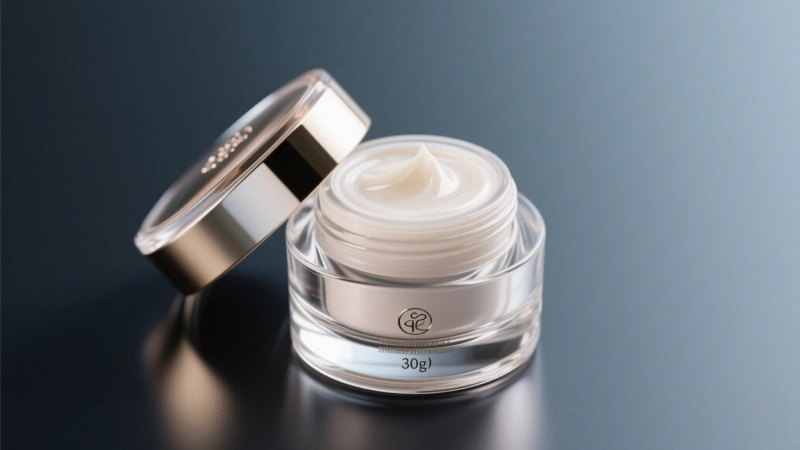
Bei der Essenzserie wird meist eine enghalsige Glasflasche mit einem Pumpenkopf aus Kunststoff oder eloxiertem Aluminium verwendet, und das Fassungsvermögen beträgt in der Regel 20-100 ml. Das enghalsige Design reduziert die Kontaktfläche zwischen der Essenz und der Luft, während der Pumpenkopf eine quantitative Nutzung ermöglicht, Abfall vermeidet und die Hygiene des Produkts gewährleistet.
Im Vergleich zu Pumpenköpfen aus Kunststoff haben Pumpenköpfe aus eloxiertem Aluminium mehr Vorteile in Bezug auf Beschaffenheit und Haltbarkeit und werden häufig bei hochwertigen Essenzen verwendet. Ein hochwertiges Anti-Aging-Präparat einer bestimmten Marke verwendet eine 50-ml-Glasflasche mit enger Öffnung und einem galvanisierten Aluminium-Pumpenkopf, der nicht nur die optische Wirkung des Produkts verbessert, sondern auch die Erfahrung des Verbrauchers steigert. Nach der Einführung des Produkts stiegen die Verkäufe im Vergleich zum Vorjahr um 20%.
Bei der Verpackung der Tonerserie handelt es sich in der Regel um eine enghalsige Glasflasche mit einem Innenstopfen aus Kunststoff und einem Außendeckel. Das Fassungsvermögen liegt im Allgemeinen über 100 ml, und einige Produkte sind auch mit einem Pumpenkopf ausgestattet. Der Innenstopfen aus Kunststoff dient der vorläufigen Abdichtung, und der Außendeckel verstärkt die Abdichtung zusätzlich.
Die Tonerverpackung mit einem Pumpkopf ist für die Verbraucher bequem, um die Verbrauchsmenge zu kontrollieren, und eignet sich besonders für Reisen. Ein auf dem Markt befindlicher 150-ml-Toner verwendet eine Glasflasche mit enger Öffnung und einem Pumpkopf. Aufgrund seiner Bequemlichkeit gehört er zu den umsatzstärksten Produkten in Reisegröße und hält 30% des Marktanteils ähnlicher Produkte.
Bei den Flaschen für ätherische Öle handelt es sich im Allgemeinen um enghalsige Glasflaschen mit Innenstopfen, großen Kopfkappen oder Gummiköpfen, Tropfern und galvanisierten Aluminiumkappen. Ätherische Öle sind lichtempfindlich, daher sind die Fläschchen für ätherische Öle in der Regel aus braunem oder farbigem und gefrostetem Material hergestellt, um eine lichtdichte Wirkung zu erzielen und den Körper des ätherischen Öls besser zu schützen.
Eine Marke für ätherische Öle aus natürlichen Pflanzen verwendet braune Milchglasflaschen zur Verpackung von ätherischen Ölen, wodurch Lichtschäden an den Inhaltsstoffen der ätherischen Öle wirksam vermieden werden und die Haltbarkeit des Produkts auf 3 Jahre verlängert wird. Statistiken zufolge ist die Reklamationsquote bei ätherischen Ölprodukten, die diese Art von lichtdichter Verpackung verwenden, um 40% niedriger als bei Produkten in herkömmlichen Verpackungen.
Es ist erwähnenswert, dass Glasflaschen mit einem Fassungsvermögen von mehr als 200 ml in der Kosmetikbranche selten verwendet werden. Der Grund dafür ist, dass Glasflaschen mit großem Fassungsvermögen zusammen mit ihrem Eigengewicht das Gesamtgewicht zu hoch werden lassen, was für die Verwendung unpraktisch ist und die Verbrauchererfahrung beeinträchtigt.
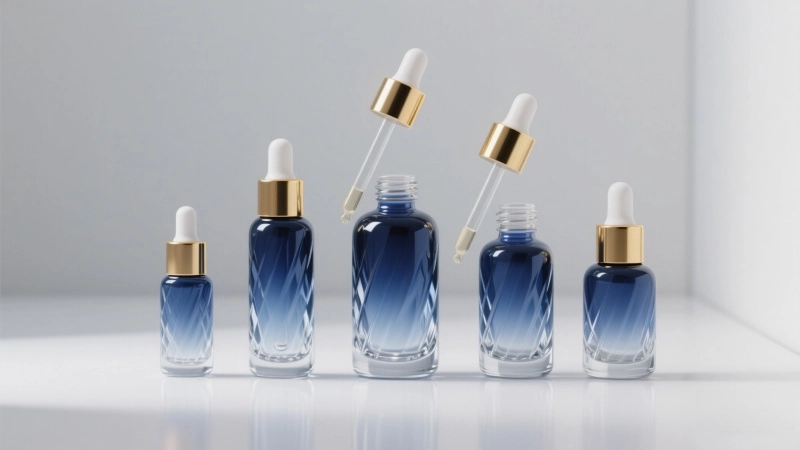
Durch das Frosting-Verfahren wird die Oberfläche der Glasflasche so behandelt, dass sie eine trübe Textur erhält. Dieses Verfahren erhöht nicht nur die Schönheit der Flasche, sondern hat auch einen gewissen Anti-Rutsch-Effekt. Mattierte Glasflaschen werden häufig in hochwertigen Kosmetikverpackungen verwendet, um die Qualität des Produkts zu verbessern. Die Kosten für das Mattierungsverfahren sind relativ gering. Bei einem normalen Verfahren kostet jede Flasche etwa ein paar Cent mehr.
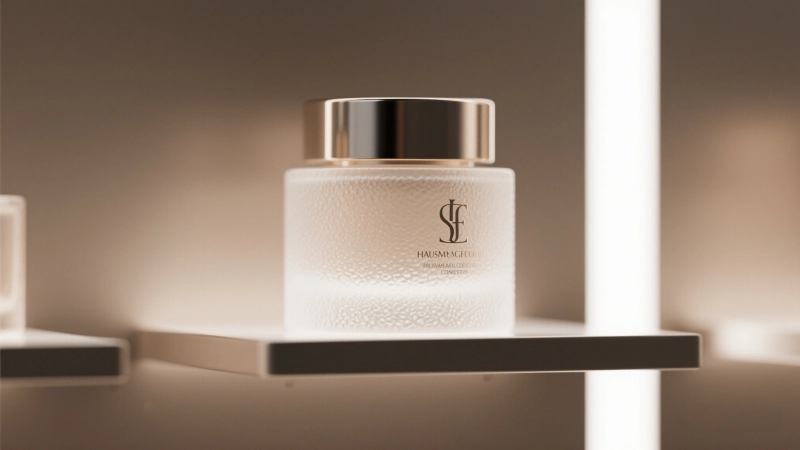
Das Sprühverfahren kann Glasflaschen eine Vielzahl von Farben und Effekten verleihen. Die besprühten Flaschen sind hell und einheitlich in der Farbe, aber die Kosten sind relativ hoch, im Allgemeinen 0,5-1,1 Yuan pro Flasche. Das Sprühverfahren wird häufig eingesetzt, um personalisierte Verpackungseffekte zu erzielen und so den Designanforderungen verschiedener Marken gerecht zu werden. Wenn beispielsweise eine Kosmetikmarke ein Produkt in limitierter Auflage auf den Markt bringt, wird ein einzigartiges Sprühverfahren verwendet, damit die Flasche wunderschön und auffallend aussieht und viele Verbraucher zum Kauf anregt.
Das Galvanisierungsverfahren kann der Oberfläche von Glasflaschen einen metallischen Glanz und eine luxuriöse Textur verleihen und wird häufig bei hochwertigen Kosmetikverpackungen eingesetzt. Die Kosten des Galvanisierungsverfahrens sind jedoch höher als die des Spritzens, aber der einzigartige visuelle Effekt bringt auch einen höheren Mehrwert für das Produkt. Die Essenzflasche einer hochwertigen Hautpflegemarke nutzt das Galvanisierungsverfahren, um das Produkt im Regal hervorzuheben und das Markenimage und die Wettbewerbsfähigkeit des Produkts zu verbessern.
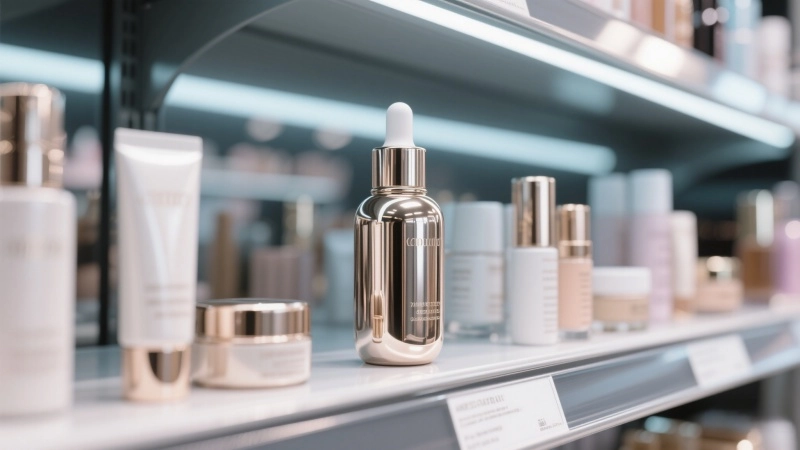
Der Siebdruck auf Flaschenkörper wird in Hochtemperatur-Farbsiebdruck und Niedertemperatur-Farbsiebdruck unterteilt. Der Hochtemperatur-Farbsiebdruck wird auf leeren transparenten, gefrosteten oder besprühten Flaschen durchgeführt. Nach dem Einfärben wird er bei hoher Temperatur eingebrannt. Er zeichnet sich dadurch aus, dass er nicht so leicht verblasst und verkratzt, aber die Farbe ist relativ stumpf und erfordert den Einsatz eines Hochtemperaturofens. Der Siebdruck mit Niedrigtemperaturtinte hat leuchtende Farben, aber die Anforderungen an die Tinte sind hoch, da sie sonst leicht abfällt, und bei der Flaschendesinfektion ist besondere Vorsicht geboten.
Die Mindestdruckmenge für den Siebdruck beträgt im Allgemeinen mehr als 5.000 Stück. Weniger als 5.000 Stück werden mit $70/Stück und mehr als 50.000 Stück mit $0,2-0,05/Stück berechnet. Runde Flaschen mit der gleichen Farbe werden als eine Farbe gezählt, und flache oder ovale Flaschen werden auf der Grundlage der Anzahl der bedruckten Flächen und der Anzahl der gedruckten Farben auf der bedruckten Fläche berechnet.
Beim Entwurf von Siebdruckmustern sollten nicht mehr als 2 Farben verwendet werden, und der Film sollte negativ sein. Der Text, das Muster und die Linien sollten nicht zu dünn und nicht zu groß sein, um Brüche oder Farbansammlungen zu vermeiden. Vor der Massenproduktion muss ein Proofing durchgeführt werden, um Farbunterschiede zu vermeiden. Bei Milchglasflaschen können Sie im Falle eines Druckfehlers nachschleifen und dann drucken, und die Bearbeitungsgebühr beträgt etwa $0,01-0,05 pro Stück.
Die Verarbeitung der Flaschenverschlüsse ist vielfältig und kann durch galvanische Aluminiumbeschriftung, Heißprägung, Ätzlinien usw. mit unterschiedlichen Effekten (matt oder glänzend) erfolgen. Um eine gute Abdichtung zu gewährleisten, muss der Flaschenverschluss mit einer Dichtung und einer inneren Abdeckung ausgestattet sein, und es ist am besten, ihn mit einer druckempfindlichen Folie zu verwenden, um die Dichtungswirkung weiter zu verbessern und das Auslaufen von Kosmetika zu verhindern.
Die Kosten für das Öffnen von Formen für kosmetische Glasflaschen variieren je nach Art der Form. Der Preis für eine manuelle Form liegt im Allgemeinen bei etwa $380, und eine automatische Form kostet in der Regel etwa $580 pro Stück. Wenn es sich um eine 1-von-4- oder 1-von-8-Form handelt, steigen die Kosten auf etwa $2.500-5.000, und die spezifischen Kosten hängen von den tatsächlichen Bedingungen des Herstellers ab.
Die Kosten für das Öffnen der Form sind einer der wichtigsten Kostenfaktoren, die Kosmetikunternehmen bei der Wahl der Glasflaschenverpackung berücksichtigen müssen. Bei kleinen Kosmetikmarken oder bei der Entwicklung neuer Produkte kann eine niedrigere Öffnungsgebühr die anfänglichen Investitionskosten senken. Bei großen Produktionsunternehmen sind die Kosten für die automatische Formöffnung zwar hoch, aber auf lange Sicht können die Produktionseffizienz und die Verbesserung der Produktqualität größere wirtschaftliche Vorteile bringen.
Der Produktionszyklus von Glasflaschen ist relativ lang und dauert im günstigsten Fall 20 Tage, und manche Lieferfristen betragen sogar bis zu 45 Tage. Das liegt daran, dass die Glasproduktion mehrere komplexe Schritte umfasst, wie z. B. das Schmelzen des Rohmaterials, das Formen und die Verarbeitung, und jeder dieser Schritte erfordert eine strenge Kontrolle von Qualität und Zeit. Gleichzeitig wird der Produktionszyklus auch durch die Nebensaison des Marktes beeinflusst. In der Hochsaison steigt das Auftragsvolumen, der Produktionsplan ist eng, und der Produktionszyklus kann sich weiter verlängern; in der Nebensaison ist der Produktionszyklus relativ kurz.
Im Allgemeinen beträgt die Bestellmenge für kosmetische Glasflaschen 5.000 bis 10.000 Stück. Je kleiner die Flasche ist, desto größer ist die Menge, die produziert werden muss. Der Grund dafür ist, dass der Ausstoß pro Zeiteinheit bei kleinen Flaschen während des Produktionsprozesses gering ist. Um eine effiziente Produktion und Kostenkontrolle zu gewährleisten, verlangen die Hersteller eine höhere Mindestbestellmenge. Damit die Glasflaschen beim Transport nicht beschädigt werden, sollten Papier- oder Schaumstoffverpackungen verwendet und einzeln getrennt werden, und es sollten gleichzeitig Innenschalen und Mittelkartons bereitgestellt werden, die besser vor Stößen schützen und Transportverluste verringern können.
Die ungleichmäßige Dicke von Glasflaschen kann leicht zu Schäden führen. Bei großer Kälte gefriert der Inhalt der Flasche und dehnt sich aus, wodurch die Flasche gequetscht werden kann. Daher ist es notwendig, die angemessene Kapazität beim Befüllen zu prüfen, wobei die Volumenänderung nach dem Gefrieren des Wassers zu berücksichtigen ist. Im Allgemeinen sollte die Flasche nicht zu voll sein, und 15% - 20% Raum sollte gelassen werden. Wenn der Toner zum Beispiel im Winter im Norden überfüllt ist, kann die Flasche durch das Eis zerbrechen, was zu Produktverlusten und Verpackungsmüll führt.
Um zu verhindern, dass Glasflaschen während des Transports und der Lagerung durch Stöße beschädigt werden, sollte das Produkt mit einem Farbkarton, einem Innenbehälter und einem Mittelkarton ausgestattet sein. Diese Verpackungskomponenten können eine gute stoßfeste Rolle spielen, die Integrität der Glasflasche schützen und sicherstellen, dass das Produkt sicher an die Verbraucher geliefert wird.
Kosmetische Glasflaschen nehmen aufgrund ihrer Vorteile wie Bleifreiheit und Unbedenklichkeit, gute Barriereeigenschaften, Sicherheit und Hygiene sowie Wiederverwertbarkeit eine wichtige Stellung im Bereich der Kosmetikverpackungen ein. Durch eine sinnvolle Klassifizierung und Anpassung werden die Verpackungsanforderungen verschiedener Arten von Kosmetika erfüllt; die reichhaltigen und vielfältigen Einfärbungsprozesse und Flaschenverschlüsse bieten den Marken die Möglichkeit, personalisierte und hochwertige Verpackungsbilder zu schaffen.
Kosmetische Glasflaschen haben jedoch auch die Merkmale hoher Kosten für die Öffnung der Form und langer Produktionszyklen. Die Unternehmen müssen bei der Auswahl die Kosten und den Bedarf umfassend berücksichtigen. Gleichzeitig sollte während des Gebrauchs darauf geachtet werden, Schäden zu vermeiden und die Stoßfestigkeit der Verpackung zu erhöhen, um die Produktqualität und die Transportsicherheit zu gewährleisten. Da die Anforderungen der Verbraucher an die Qualität und die Verpackung von Kosmetika weiter steigen, werden Kosmetikflaschen aus Glas mit ihren einzigartigen Vorteilen die Entwicklung der Kosmetikindustrie auch weiterhin stark unterstützen.
Seit seiner Gründung im Jahr 2004 konzentriert sich Yafeng Packaging auf die kundenspezifische Forschung und Entwicklung sowie die Produktion von kosmetischen Glasflaschen und Glastiegeln und beliefert damit internationale Kosmetikmarken der ersten Stunde. Das Unternehmen verfügt über fortschrittliche automatisierte Produktionslinien, strenge Qualitätsmanagementsysteme und ein erfahrenes Designteam. Es kann auf Wunsch Komplettlösungen von der Flaschenentwicklung über die Formenherstellung bis hin zur Oberflächenbearbeitung (Sprühen, Mattieren, Galvanisieren, Siebdruck usw.) anbieten, um sicherzustellen, dass jede Verpackung sowohl ein exquisites Aussehen als auch eine hervorragende Leistung aufweist. Wenn Sie hochwertige und nachhaltige Verpackungen für Hautpflegeprodukte aus Glas benötigen, wenden Sie sich bitte an Yafeng Packaging. Wir werden Ihr vertrauenswürdiger langfristiger Partner mit professioneller Technologie und ehrlichem Service sein.
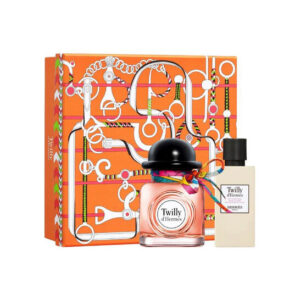
Enthüllen Sie die Geheimnisse der Parfümverpackung. Entdecken Sie Glasflaschen, Reisegrößen, Sprüh- und Rollerballtypen, feste Parfümverpackungen und individuelle Optionen. Entdecken Sie, wie Sie die Attraktivität im Regal erhöhen können. Finden Sie die perfekte Verpackung für Ihre Marke oder Ihren persönlichen Geschmack.
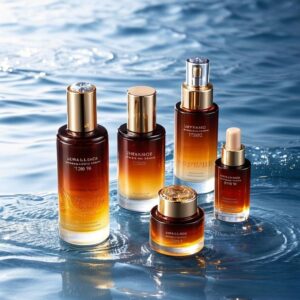
Erfahren Sie mehr über die Ursachen von Rissen in kosmetischen Lotionsflaschen aus Glas während der Abfüllung und entdecken Sie effektive Lösungen zur Verbesserung der Produktsicherheit, Qualität und Produktionseffizienz.
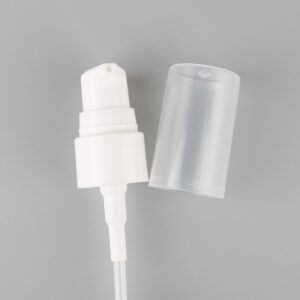
Einstoffpumpen aus Vollkunststoff revolutionieren die Kosmetikverpackung mit umweltfreundlichen, kostengünstigen und recycelbaren Designs, die Nachhaltigkeit und Markenattraktivität fördern.

Erfahren Sie, warum Glas das bevorzugte Material für Parfümflaschen ist, welche Vorteile es bietet und wie sich das Design entwickelt hat.

Entdecken Sie, warum Glasverpackungen die erste Wahl in Sachen Schönheit sind - elegant, umweltfreundlich, individuell anpassbar und schützend für Hautpflege- und Kosmetikprodukte.
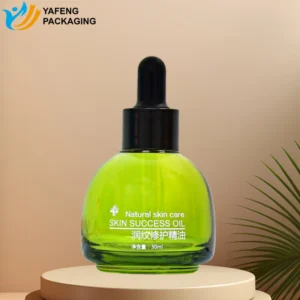
Entdecken Sie, wie die Sprühbeschichtung Hautpflege- und Parfümverpackungen aufwertet, indem sie das Erscheinungsbild, die Markenidentität, die Haltbarkeit und die Sicherheit mit fortschrittlicher Technologie verbessert.
Informieren Sie sich über individuelle und Standardflaschen für Hautpflegeverpackungen. Erfahren Sie in diesem ausführlichen Leitfaden, wie die Lösungen von Yafeng die Markenidentität, Qualität und Effizienz steigern.
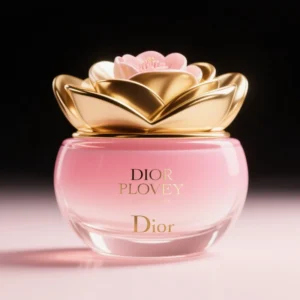
Entdecken Sie, wie Farbverlaufsspray kosmetische Glasflaschen verwandelt, das Markenimage verbessert und die Produktattraktivität steigert - mit Expertenwissen von Yafeng Packaging.
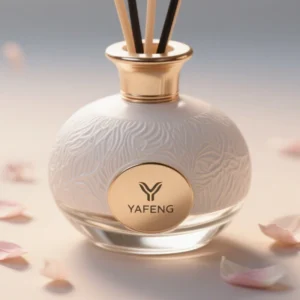
Entdecken Sie, wie die Rattan-Aromatherapie funktioniert und warum Glasflaschen die beste Wahl für einen lang anhaltenden Duft, Sicherheit und eine nachhaltige, elegante Verpackung sind.
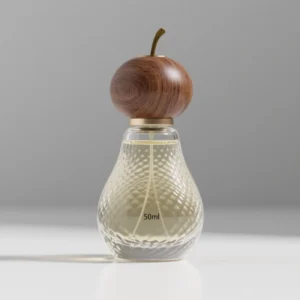
Entdecken Sie die 10 besten Hölzer für Parfümkappen und vergleichen Sie Beschaffenheit, Vor- und Nachteile sowie den Preis, damit Sie das beste Material für eine stilvolle, hochwertige Verpackung wählen können.
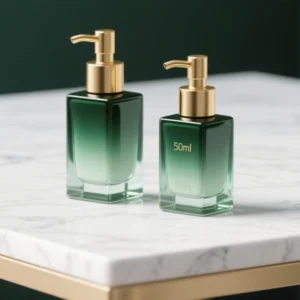
Informieren Sie sich über kosmetische Glasflaschen - Sicherheit, ökologische Vorteile, Typen, Färbung, Formkosten, MOQ und Produktionstipps - in einem sachkundigen, datenreichen Leitfaden.
WhatsApp uns